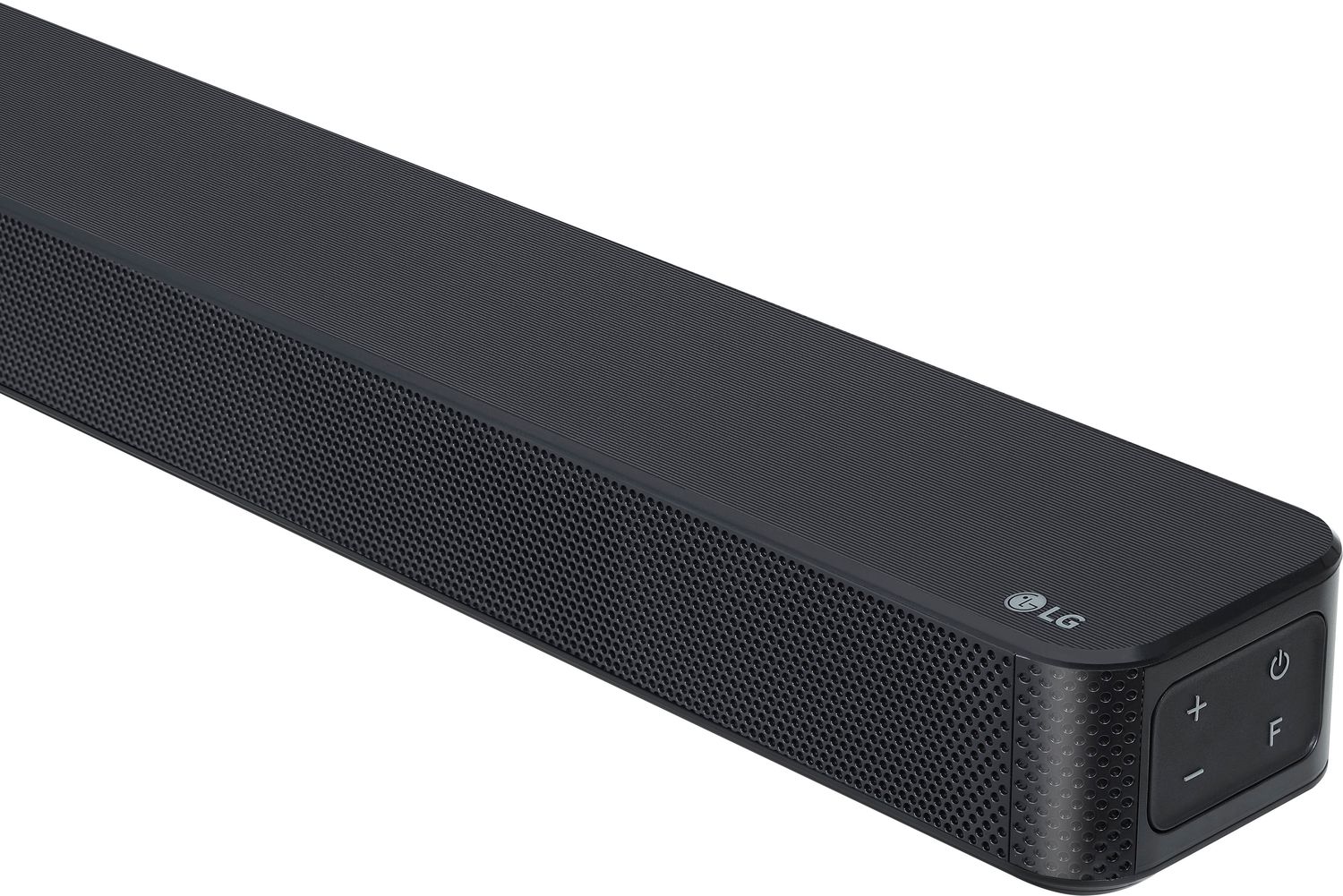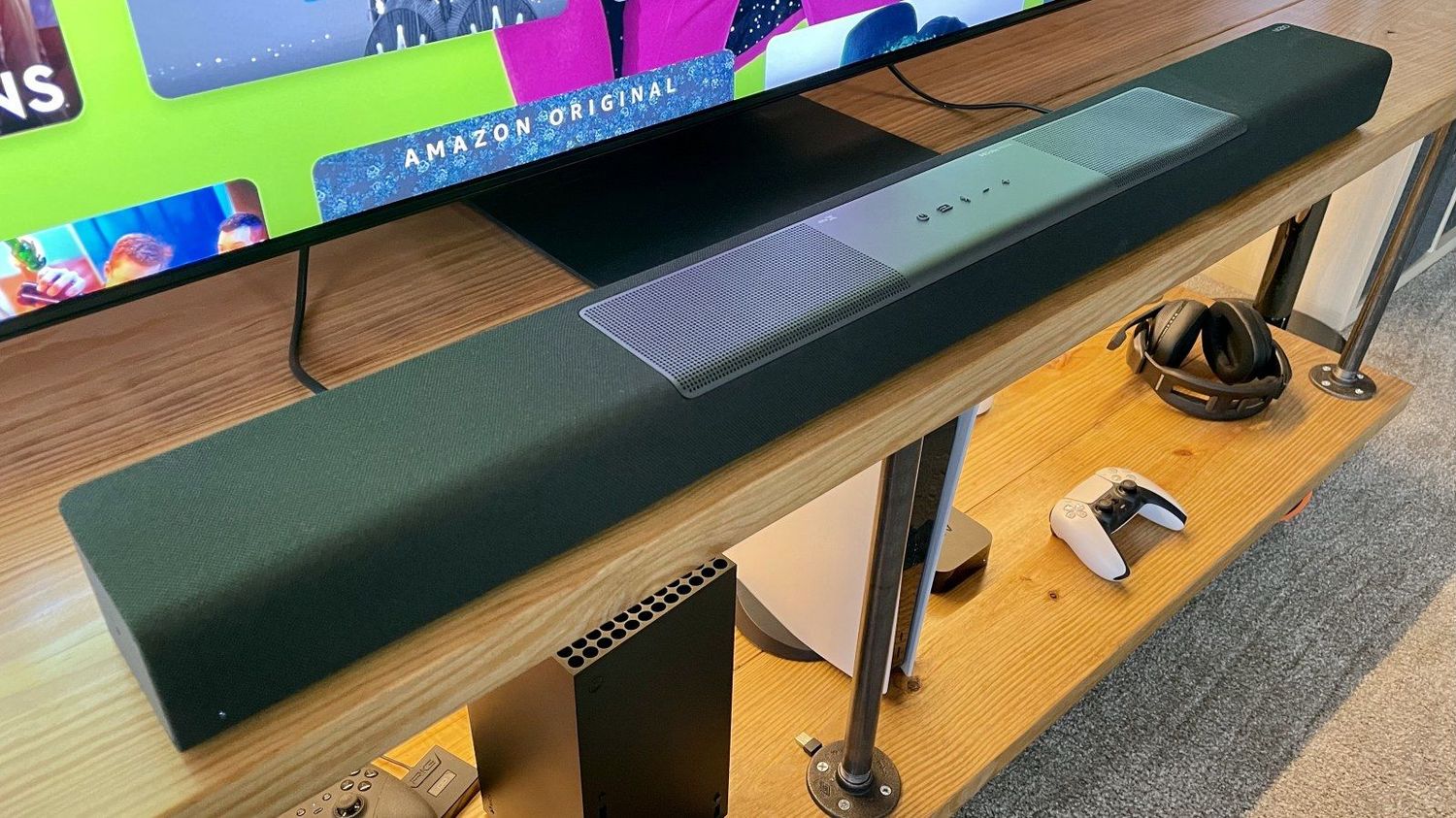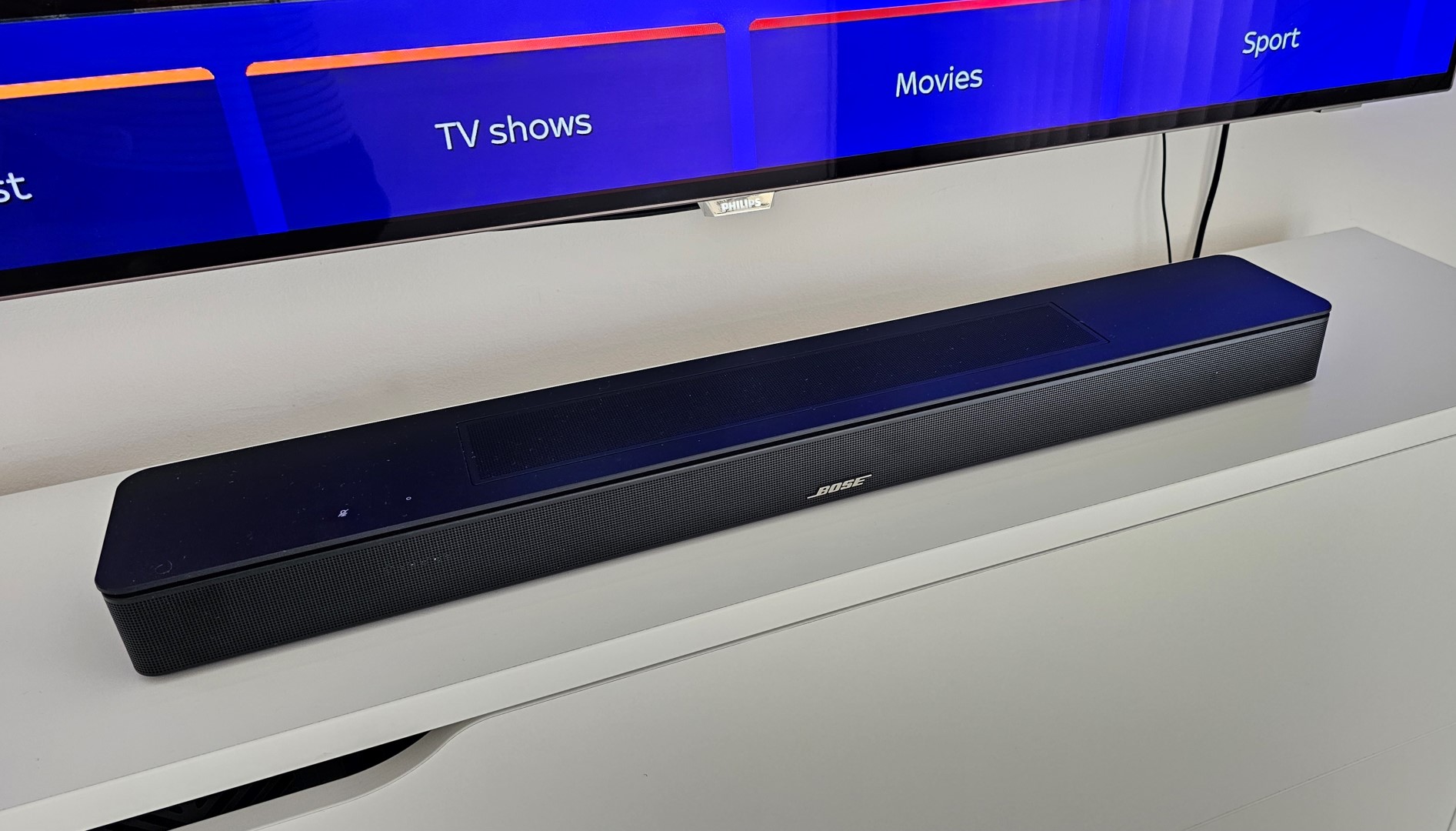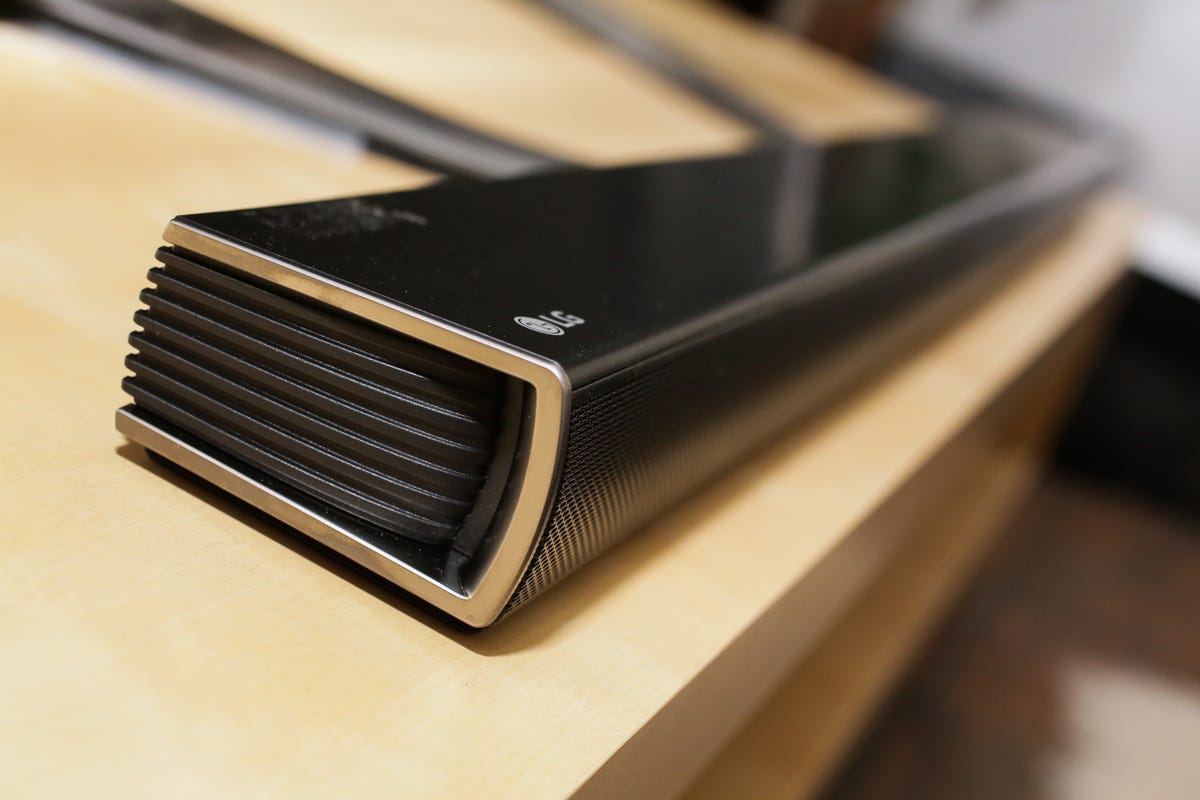Home>Production & Technology>Sound Bar>How To Connect A LG Sound Bar
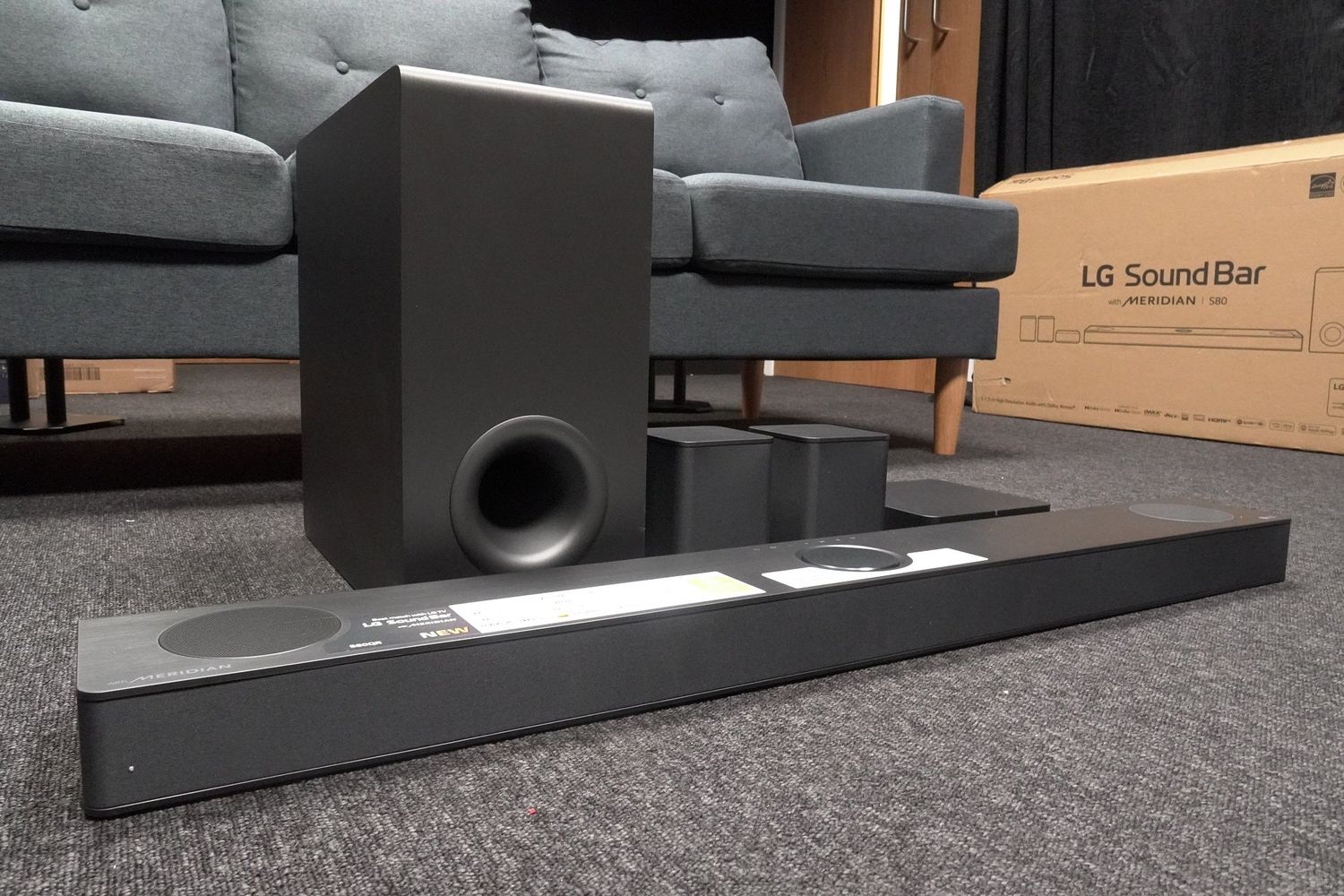

Sound Bar
How To Connect A LG Sound Bar
Modified: January 22, 2024
Learn how to connect a LG Sound Bar to your TV and enhance your audio experience. Step-by-step instructions and troubleshooting tips for a seamless setup.
(Many of the links in this article redirect to a specific reviewed product. Your purchase of these products through affiliate links helps to generate commission for AudioLover.com, at no extra cost. Learn more)
Table of Contents
- Introduction
- Step 1: Gather the necessary equipment
- Step 2: Identify the available connectivity options on your LG Sound Bar
- Step 3: Determine the appropriate connection method based on your TV’s available audio outputs
- Step 4: Connect the LG Sound Bar to your TV using an HDMI cable
- Step 5: Connect the LG Sound Bar to your TV using an optical cable
- Step 6: Connect the LG Sound Bar to your TV using a digital coaxial cable
- Step 7: Connect the LG Sound Bar to your TV using a 3.5mm auxiliary cable
- Step 8: Adjust the sound settings on your TV for optimal audio output
- Conclusion
Introduction
Welcome to our comprehensive guide on how to connect an LG Sound Bar to your TV. If you’re looking to enhance your audio experience with high-quality sound, a sound bar is a fantastic investment. LG offers a range of sound bars that are designed to deliver immersive and crystal-clear audio for your movies, TV shows, and music.
Connecting your LG Sound Bar to your TV is a straightforward process that can be done using a few different methods. By establishing this connection, you can enjoy the enhanced sound quality and immersive experience that a sound bar brings to your entertainment setup.
In this guide, we will walk you through the step-by-step process of connecting your LG Sound Bar to your TV, regardless of the make or model. We will cover various connection options such as HDMI, optical cable, digital coaxial cable, and 3.5mm auxiliary cable. This will allow you to choose the most suitable option based on your TV’s available audio outputs and the connectivity options on your LG Sound Bar.
So, whether you have an LG OLED TV, an LG NanoCell TV, or any other TV brand, this guide will help you seamlessly integrate your LG Sound Bar into your setup, ensuring that you can enjoy superior audio performance with ease.
Now, let’s dive into the step-by-step instructions to connect your LG Sound Bar to your TV and elevate your home entertainment experience!
Step 1: Gather the necessary equipment
Before you start connecting your LG Sound Bar to your TV, it’s important to ensure that you have all the necessary equipment on hand. Here’s a checklist of items you will need:
- LG Sound Bar: Make sure you have the sound bar itself, along with its power cord and any additional accessories that came with it.
- Compatible TV: Ensure that you have a TV with available audio output options such as HDMI ARC, optical, digital coaxial, or a 3.5mm audio output jack.
- HDMI cable: If you’re planning to connect your LG Sound Bar to your TV using an HDMI connection, you’ll need an HDMI cable. Make sure the cable is long enough to reach from the sound bar to the TV.
- Optical cable: If you’re planning to use an optical connection, you will need an optical cable. Ensure that the cable is long enough to connect the sound bar and the TV.
- Digital coaxial cable: If your TV has a digital coaxial audio output, you’ll need a digital coaxial cable to establish the connection.
- 3.5mm auxiliary cable: In case your TV has a 3.5mm audio output jack, you’ll need a 3.5mm auxiliary cable to connect the sound bar.
It’s important to note that the specific requirements may vary depending on the model of your LG Sound Bar and your TV. Always refer to the user manuals of your devices for any specific instructions or additional equipment that may be needed.
Once you have gathered all the necessary equipment, you’re ready to move on to the next steps of connecting your LG Sound Bar to your TV. Let’s explore the available connectivity options on your LG Sound Bar in the next step.
Step 2: Identify the available connectivity options on your LG Sound Bar
Before you connect your LG Sound Bar to your TV, it’s crucial to identify the available connectivity options on your sound bar. Different models may have different input and output ports, so knowing what options are available to you will help you choose the most suitable method for connecting to your TV.
Here are some common connectivity options you might find on your LG Sound Bar:
- HDMI ARC (Audio Return Channel): This feature allows you to transmit audio from your TV to the sound bar through an HDMI cable. It not only delivers high-quality sound but also enables you to control the sound bar using your TV remote.
- Optical input: An optical input allows you to connect your sound bar to your TV using an optical cable. This connection method supports high-quality digital audio.
- Digital coaxial input: If your sound bar and TV both have digital coaxial ports, you can use a digital coaxial cable to establish an audio connection. This option provides a reliable and high-quality audio transfer.
- 3.5mm auxiliary input: Some sound bars have a 3.5mm auxiliary jack that allows you to connect your TV using a 3.5mm auxiliary cable. This method is suitable if your TV has a headphone jack or a compatible audio output.
- Bluetooth connectivity: Depending on the model of your LG Sound Bar, it may also offer Bluetooth connectivity. This allows you to wirelessly connect your sound bar to your TV, eliminating the need for physical cables. However, it’s important to note that Bluetooth connectivity may have some limitations in terms of audio quality and range.
Once you have identified the available connectivity options on your LG Sound Bar, you can proceed to the next step and determine the appropriate connection method based on the audio outputs available on your TV. We will guide you through the different connection options in the following steps.
Step 3: Determine the appropriate connection method based on your TV’s available audio outputs
Now that you have identified the available connectivity options on your LG Sound Bar, it’s time to determine the appropriate connection method based on the audio outputs available on your TV. The connection method you choose will depend on the audio outputs supported by your TV.
Here are some common audio output options you might find on your TV:
- HDMI ARC (Audio Return Channel): If your TV has an HDMI ARC port, this is often the recommended connection method. HDMI ARC allows for high-quality audio transmission and enables you to control the sound bar using your TV remote.
- Optical output: Many TVs feature an optical output, which is another excellent option for connecting to your LG Sound Bar. This method provides a reliable digital audio connection.
- Digital coaxial output: If your TV has a digital coaxial output, you can use a digital coaxial cable to connect to your sound bar. Similar to the optical connection, this option ensures high-quality audio transfer.
- 3.5mm auxiliary output: Some TVs have a 3.5mm auxiliary jack, commonly known as a headphone jack, that can be used to connect to your sound bar using a 3.5mm auxiliary cable. This option is suitable if your TV lacks other audio output options.
- Bluetooth output: If your TV supports Bluetooth output, you can wirelessly connect your LG Sound Bar using Bluetooth technology. Keep in mind that not all TVs have this feature, and there may be limitations in terms of audio quality and range.
Consult your TV’s user manual or look for the audio output labels on the back or side of your TV to determine which options are available. Once you know the available audio outputs, you can move on to the next step and select the appropriate connection method for your LG Sound Bar.
In the following steps, we will guide you through the specific instructions for different connection methods, including HDMI, optical, digital coaxial, and 3.5mm auxiliary connections. Choose the method that best suits your TV’s audio outputs and the available connectivity options on your LG Sound Bar.
Step 4: Connect the LG Sound Bar to your TV using an HDMI cable
If your TV and LG Sound Bar both support HDMI ARC (Audio Return Channel), connecting them using an HDMI cable is often the preferred method. HDMI ARC not only allows for high-quality audio transmission but also enables you to control the sound bar using your TV remote.
Here’s a step-by-step guide to connecting your LG Sound Bar to your TV using an HDMI cable:
- Locate the HDMI ARC port on your TV and the HDMI ARC port on your LG Sound Bar. They are usually labeled “HDMI ARC” or “ARC”.
- Connect one end of the HDMI cable to the HDMI ARC port on your TV.
- Connect the other end of the HDMI cable to the HDMI ARC port on your LG Sound Bar.
- Turn on your TV and navigate to the settings menu. Look for the audio settings or sound output options.
- Select the HDMI ARC option as the audio output on your TV.
- Power on your LG Sound Bar and switch its input source to the HDMI ARC input.
- You should now be able to enjoy audio from your TV through your LG Sound Bar. Adjust the volume and other settings as needed.
It’s important to note that not all HDMI ports support ARC. Make sure you connect the HDMI cable to the designated ARC port on both your TV and your LG Sound Bar. Refer to the user manuals of your devices for specific instructions and any additional settings that may need to be configured.
If your TV or sound bar does not have HDMI ARC support, you can explore other connection methods such as optical, digital coaxial, or 3.5mm auxiliary cables. We will discuss these alternatives in the following steps.
Step 5: Connect the LG Sound Bar to your TV using an optical cable
If your TV or LG Sound Bar does not have HDMI ARC support, using an optical cable is a reliable alternative for connecting the two devices. An optical connection provides a high-quality digital audio transfer between your TV and sound bar.
Follow these steps to connect your LG Sound Bar to your TV using an optical cable:
- Locate the optical output port on your TV. It is usually labeled as “Optical Out” or “Digital Out”.
- Connect one end of the optical cable to the optical output port on your TV.
- Locate the optical input port on your LG Sound Bar. It is commonly labeled as “Optical In” or “Digital In”.
- Connect the other end of the optical cable to the optical input port on your LG Sound Bar.
- Once the cable is securely connected, power on your TV and LG Sound Bar.
- On your TV, navigate to the settings menu and access the audio settings or sound output options.
- Select the optical output as the audio output on your TV.
- Switch the input source on your LG Sound Bar to the optical input.
- You should now be able to enjoy audio from your TV through your LG Sound Bar. Adjust the volume and other settings as needed.
It’s important to note that optical cables transmit audio only, so you may need to use a separate HDMI or other cable for video playback between your TV and source devices. Additionally, ensure that the optical cable is securely connected to both the TV and the sound bar to avoid any audio issues.
If your TV does not have an optical output, you can explore other connection methods such as digital coaxial or 3.5mm auxiliary cables. We will cover these options in the following steps.
Step 6: Connect the LG Sound Bar to your TV using a digital coaxial cable
If your TV and LG Sound Bar have digital coaxial ports, you can establish an audio connection using a digital coaxial cable. Similar to optical cables, digital coaxial cables provide a high-quality digital audio transfer between devices.
Follow these steps to connect your LG Sound Bar to your TV using a digital coaxial cable:
- Locate the digital coaxial output port on your TV. It is typically labeled as “Coaxial Out” or “Digital Out”.
- Connect one end of the digital coaxial cable to the digital coaxial output port on your TV.
- Find the digital coaxial input port on your LG Sound Bar. It is commonly labeled as “Coaxial In” or “Digital In”.
- Connect the other end of the digital coaxial cable to the digital coaxial input port on your LG Sound Bar.
- Ensure that the cable is securely connected to both the TV and the sound bar.
- Power on your TV and LG Sound Bar.
- Navigate to the audio settings or sound output options in the settings menu of your TV.
- Select the digital coaxial output as the audio output on your TV.
- Switch the input source on your LG Sound Bar to the digital coaxial input.
- You should now be able to enjoy audio from your TV through your LG Sound Bar. Adjust the volume and other settings as needed.
Ensure that the digital coaxial cable is securely connected to both the TV and the sound bar to avoid any audio disruptions. Refer to the user manuals of your devices for specific instructions on configuring the audio settings.
If your TV and sound bar do not have digital coaxial ports, you can explore other connection methods such as 3.5mm auxiliary cables, which we will cover in the next step.
Step 7: Connect the LG Sound Bar to your TV using a 3.5mm auxiliary cable
If your TV has a 3.5mm audio output jack or headphone jack, you can connect it to your LG Sound Bar using a 3.5mm auxiliary cable. This method is suitable when other audio output options like HDMI ARC, optical, or digital coaxial are not available.
Follow these steps to connect your LG Sound Bar to your TV using a 3.5mm auxiliary cable:
- Locate the 3.5mm audio output jack on your TV. It is typically labeled as “Headphone” or “Audio Out”.
- Insert one end of the 3.5mm auxiliary cable into the 3.5mm audio output jack on your TV.
- Find the 3.5mm auxiliary input jack on your LG Sound Bar. It is commonly labeled as “Aux In” or “Audio In”.
- Connect the other end of the 3.5mm auxiliary cable into the 3.5mm auxiliary input jack on your LG Sound Bar.
- Ensure that the cable is securely connected to both the TV and the sound bar.
- Power on your TV and LG Sound Bar.
- On your TV, access the audio settings or sound output options in the settings menu.
- Select the 3.5mm audio output as the audio output on your TV.
- Switch the input source on your LG Sound Bar to the 3.5mm auxiliary input.
- You should now be able to enjoy audio from your TV through your LG Sound Bar. Adjust the volume and other settings as needed.
Ensure that the 3.5mm auxiliary cable is securely connected to both the TV and the sound bar to avoid any audio disruptions. Additionally, some TVs may have a volume control option for the headphone or audio output, so make sure to check your TV’s menu for any necessary adjustments.
With the 3.5mm auxiliary connection set up, you can now enjoy enhanced sound quality from your TV through your LG Sound Bar.
Step 8: Adjust the sound settings on your TV for optimal audio output
Once you have successfully connected your LG Sound Bar to your TV using the desired method, it’s important to adjust the sound settings on your TV to optimize the audio output. Fine-tuning the settings can help enhance your listening experience and ensure that you get the best possible sound quality.
Here are some important sound settings that you can adjust on your TV:
- Sound mode: Most TVs offer different sound modes such as Standard, Cinema, Music, or Sports. Experiment with these modes to find the one that suits your preference and the content you’re watching.
- Equalizer settings: Some TVs allow you to tweak the equalizer settings, which control the balance of different audio frequencies. Adjusting these settings can help personalize the sound to your liking.
- Audio delay: If you find that the audio is out of sync with the video, your TV may have an option to adjust the audio delay. This helps to align the audio and video timing for a better viewing experience.
- Volume leveling: TV shows and movies often have variations in audio volume. Enable a volume leveling or dynamic range control feature on your TV, if available, to ensure consistent volume levels.
- Surround sound settings: If your LG Sound Bar supports virtual surround sound or other audio enhancement features, enable them on your TV to create a more immersive audio experience.
Consult your TV’s user manual for specific instructions on accessing and adjusting these settings. Keep in mind that not all TVs will have the same options or terminology, but the concepts remain similar.
Additionally, you can also refer to the user manual of your LG Sound Bar for any specific sound adjustments or audio enhancement features it may offer. Experimenting with different settings will help you find the configuration that suits your preferences and provides an optimal audio output.
With the sound settings adjusted, sit back, relax, and enjoy the immersive audio experience that your LG Sound Bar brings to your TV viewing.
Conclusion
Connecting your LG Sound Bar to your TV is a simple process that can greatly enhance your audio experience. Whether you choose HDMI ARC, optical, digital coaxial, or 3.5mm auxiliary connections, these steps have shown you how to seamlessly integrate your LG Sound Bar into your entertainment setup.
By following the step-by-step instructions in this guide, you can enjoy high-quality sound and immerse yourself in a more captivating viewing experience. Remember to gather all the necessary equipment, identify the available connectivity options, and select the appropriate method based on your TV’s audio outputs.
Adjusting the sound settings on your TV can further optimize audio output and help you fine-tune the sound to your liking. Explore sound modes, equalizer settings, and other audio enhancement features to customize the audio experience to suit your preferences.
With your LG Sound Bar properly connected and the sound settings adjusted, you can now sit back, relax, and enjoy movies, TV shows, and music with enhanced audio quality. Immerse yourself in the immersive sound experience that your LG Sound Bar brings to your home entertainment setup.
Remember to refer to the user manuals of your TV and LG Sound Bar for any specific instructions or additional features that may be available. If you encounter any issues during the setup process, consult the troubleshooting section of your user manuals or seek support from the manufacturer.
Enjoy your enhanced audio experience with your LG Sound Bar and elevate your home entertainment to new heights!



